An iron removes creases from textiles and ensures smooth, neat laundry. No matter whether shirts, jeans or curtains need to be shaped – iron is the ideal household helper.
The iron was used to smooth textiles from as early as the 15th century. However, that time they consist of a handle and a metal plate that had to be heated on the coal or wood fire before use.
Since then, the household appliance has undergone constant further development, making the tedious task much easier now.
Fact!
According to a study by the market research company, ironing is the most unpopular housework in Europe and the USA.
There is a heating coil in the soleplate nowadays, which heats up as soon as current flows through it. Due to the heat – in combination with pressure on the textiles to be smoothed, their fiber molecules become mobile and can be shaped.
In addition to the heat, some models work with steam, which penetrates the fabric and causes the textile fibers to swell. This makes it easier to smooth and shape them.
In the meantime, there are irons in different designs and equipment. Given this variety of models, it is often difficult to make the right purchase decision. To give you an overview, we have put together the most important decision-making features for you in our buyer’s guide below.
Buyers guide for choosing the best iron
Iron should not only remove wrinkles as quickly and easily as possible but should also be easy to use. So that you can quickly get an overview and find the perfect iron for your needs, we have summarized the most important information for you below.
When choosing your iron, consider the following points in particular:
First of all, the amount of ironing that is regularly used in your household is important.
In a single-person household, there will probably be less ironing than in a family of several. Depending on how much laundry you iron regularly, you can choose from different types of irons.
Another aspect that you should consider when making your decision is the space available for the device.
A bracket system takes up a lot of space and is not so easy to store. If you do not have enough space, e.g. in the storage room or the laundry room, we recommend the steam iron or a compact steam ironing system.
It also plays an important role which textiles you mainly iron.
Thicker fabrics such as jeans or linen require better steam properties than fine textiles.
Different Types of Iron
Irons can be divided into types for everyday use and special models for special needs.
Shopping tip!
When making your choice, ask yourself the following questions:
How big is your household? single or family?
What clothes do you mostly own?
How much space do you have for the device?
The following models are suitable for everyday ironing:
- Dry Iron
- Steam iron
- Steam iron stations
- Ironing systems
Dry Iron
Dry irons are now rather rare. They have largely been replaced by steam irons because they offer more advantages.
Dry irons work only with the heat of the sole, without steam.
Dry irons are usually inexpensive, so you have low purchase costs (approx. 20 – 30 dollars)
Since dry irons do not have a water tank, they are also relatively light and simple to use. For use, the device only needs to be connected to an electrical outlet. Also, the temperature can be regulated using a rotary knob.
However, wrinkles cannot be easily removed without steam. Especially with thicker fabrics, ironing without steam is more tedious and requires more time.
Benefits
Cheap
Light
Simple handling
Disadvantage
Tedious ironing
Requires more time
Steam iron
Steam irons have an integrated or removable water tank.
With this iron variant, the water is heated in the soleplate.
This creates hot steam that comes out of the openings in the soleplate during ironing.
The textiles are moistened during ironing and can be smoothed much faster and easier.
Steam irons are also inexpensive to buy (from around 30 dollars). For many models, however, you can use only distilled water for smooth functioning and long shelf life.
However, steam irons generally have a weaker steam output (approx. 40 g / min), a lower steam pressure and smaller water tanks than ironing stations.
Larger quantities of laundry can, therefore, be ironed better with ironing stations.
Benefits
Low purchase costs
Fast heating time
Ideal for smaller households
Disadvantage
Low steam output (approx. 40 g / min) and steam pressure in comparison to ironing stations
Some models work only with distilled water
Steam iron stations
A steam ironing station consists of a steam generator and an ironing device. The steam is generated in a separate water tank and fed through a hose into the ironing device.
With this type of steam iron, a higher steam pressure (approx. 4 – 6 bar) can be generated than with a steam iron.
In this way, the fabric can be better penetrated and thus smoothed faster and better.
Thanks to this power, steam ironing stations are suitable for larger amounts of laundry.
The steam output (approx. 120 g / min) saves a lot of time, especially when ironing thick fabrics such as jeans. Even sensitive, fine fabrics can only be smoothed with steam without damaging them.
However, steam ironing stations generally have higher acquisition costs (approx. 150-300 dollars).
They are also relatively heavy, so they cannot be stowed away easily. They also have longer warm-up times than steam irons and require more care because they need to be descaled regularly.
Some devices have a self-cleaning function, which saves you the annoying descaling.
Benefits
Higher steam pressure and steam output (approx. 120 g / min)
Better ironing results
Time savings
Ideal for larger amounts of laundry
Disadvantage
High acquisition costs
Long warm-up periods
High weight
Require more care
Ironing systems
An ironing system is a combination of the steam generator, iron, and ironing board.
The steam is generated in a separate water tank as with steam ironing stations, so ironing systems offer similar advantages.
Due to the high amount of steam generated and the high steam pressure, you get ideal ironing results.
Ironing systems mostly have larger water tanks, so they are suitable for large amounts of laundry.
So-called “active ironing boards” also offer additional functions:
Suction function
Active ironing boards can suck in the steam emitted by the iron using a suction function. The steam is guided even better into the fabric, which smoothes the fibers of the textile. Excess steam is drained off and can therefore not settle and condense.
Inflation function
The inflation function can “float” sensitive textiles over the air cushions created, which means that they can be gently smoothed. Some models also have a heating function; this also accelerates the drying of the damp laundry.
Ironing systems, however, have very high purchase costs, long warm-up phases and are maintenance-intensive. They also take up a lot of space and are not easy to store.
This system is therefore only recommended if you have enough space for a fixed storage space, e.g. in the storage room or the laundry room.
Benefits
Ideal ironing results
Very suitable for larger amounts of laundry
The additional ironing board is not necessary
Disadvantage
Require a lot of space
High acquisition costs
Long warm-up periods
Intensive care
Special models
In addition to the regular product types, the following special models are commercially available:
- Cordless iron
- Travel iron
- Steam brushes
- Garment Steamers
- Ironers
- Ironing presses
Cordless iron
Cordless irons offer all the advantages of a normal steam iron.
However, they offer more convenience because they work independently of a power source.
In this way, ironing can also be done comfortably in front of the television.
The power is supplied by a battery, which must be recharged after use on the charging station.
Benefits
Good ironing results
Works independently of a power source
Comfortable
Disadvantage
Battery charging time
Travel iron
A travel iron is characterized by its small size and lightweight.
It fits easily in the suitcase and ensures wrinkle-free clothing even on vacation and on business trips.
Travel irons are usually very inexpensive.
However, travel irons have a very small water tank and low steam output, so they are only intended for smaller amounts of laundry.
Travel irons are also suitable for occasional ironing, e.g. for students who have limited space.
Benefits
Small and handy
Ideal for travel
Low purchase costs
Disadvantage
Low steam pressure and steam output
Small water tank
Steam brushes
Steam busts remove wrinkles with steam by holding the device vertically against the textiles.
Most models also have an additional attachment, so that the steam brush can be used on smaller areas like a normal iron.
Steam brushes are small, easy to handle and have a very short heating-up time – around 40 – 50 s (seconds).
Therefore, they are ideal for quickly removing slight creases from textiles hanging on the hanger. They are also suitable for fine fabrics that can be damaged by excessive heat.
However, they are not intended for everyday ironing. Stubborn creases cannot be removed with the steam brush. Due to the small water container, the steam only lasts for a few minutes.
The devices can often not be descaled, so you should only use distilled water.
Benefits
Short heating time
Ideal for fine, sensitive fabrics
Disadvantage
Low steam pressure and steam output
Cannot remove stubborn creases
Not suitable for larger amounts of laundry
Often not suitable for descaling
Garment Steamers
Steam garment steamers consist of a water tank, a telescopic rod, and an integrated bracket.
They are not only suitable for smoothing, but also for refreshing and removing unpleasant smells from textiles. The hot steam can also remove mites from upholstered furniture or carpets.
The smoothing is done vertically, exclusively by steam, by pointing the bracket at the textiles.
Steam straighteners are ideal for removing slight creases from clothes that hang on hangers, which is why they are often used in shops and boutiques.
They are also well suited for curtains since the telescopic rod allows you to get to the upper positions optimally.
However, the devices are not intended for everyday ironing as they cannot remove stubborn creases. Also, ironing larger amounts of laundry with the steam straightener is much more time-consuming and tedious than with a normal steam iron or steam ironing station.
Benefits
Ideal for freshening up, removing unpleasant smells and removing mites from textiles
Ideal for removing slight creases from clothes on hangers
Disadvantage
Not intended for everyday ironing
Ironers
Ironing machines are mostly used for commercial purposes.
In an ironing machine, the laundry is drawn through a heated roller for smoothing.
The speed of rotation and the type of textile can be set using a rotary switch.
Ironing machines are very suitable for large, smooth textiles such as tablecloths and curtains. However, they are unsuitable for fine textiles and complicated cuts (eg shirts or blouses).
The devices are rather expensive, so you should expect high purchase costs (from around 1,000 dollars). They are also large and bulky and require a lot of space.
Benefits
Comfortable
Time-saving
Ideal for large, smooth textiles (e.g. tablecloths)
Disadvantage
Very high acquisition costs
Require a lot of space
Not suitable for complicated cuts (eg shirts and blouses) and delicate fabrics
Steam press
The steam press is also often used for commercial purposes.
It consists of 2 heatable soles lying on top of each other. The surface between the soles is therefore heated from above and below.
The textiles are placed between the heated soleplates and pressed together by pressing the soles together.
The temperature and the textile properties can be set via a control panel. Also, many models work with steam, so that the textiles do not have to be moistened beforehand.
Ironing presses are suitable for large textiles and simple cuts (e.g. bed linen or T-shirts). One advantage over the steam iron and ironing station is that ironing presses can produce steam even at low temperatures. That is why they are also ideal for sensitive fabrics.
The devices have lower purchase costs compared to the ironing machine (approx. From 200 dollars). They also save time because the laundry can be ironed in one go.
However, they require a lot of space. Also, they are not suitable for complicated cuts such as shirts or blouses.
Benefits
Comfortable
Time-saving
Ideal for large, textiles, simple cuts and delicate fabrics
Lower acquisition costs than the ironing machine
Disadvantage
Require a lot of space
Not suitable for complicated cuts (e.g. blouses or shirts)
Related Posts!

Rowenta DG8520 Perfect Steam Review
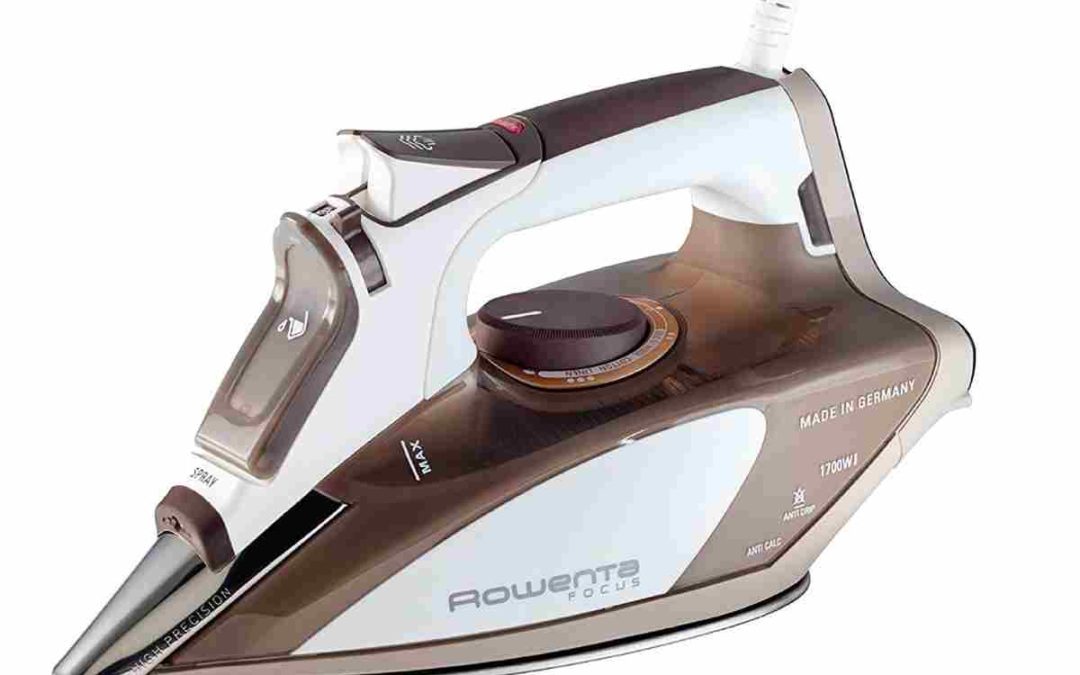
Rowenta DW5080 1700-Watt Micro Steam Iron Review

Rowenta DW9280 Digital Display Steam Iron Review
How to properly clean and take care of your iron?
Is it worth buying an ironing station?
Ironing with distilled water or normal tap water

Ironing without an iron – is that possible?

The best tips and tricks for ironing

Best Steam Iron | Reviews and Buyers Guide
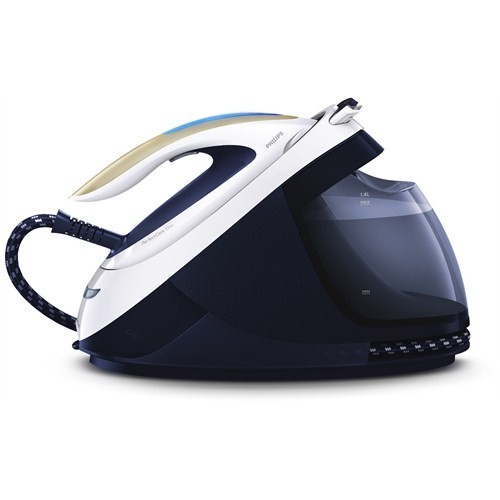
How to choose the best steam iron station
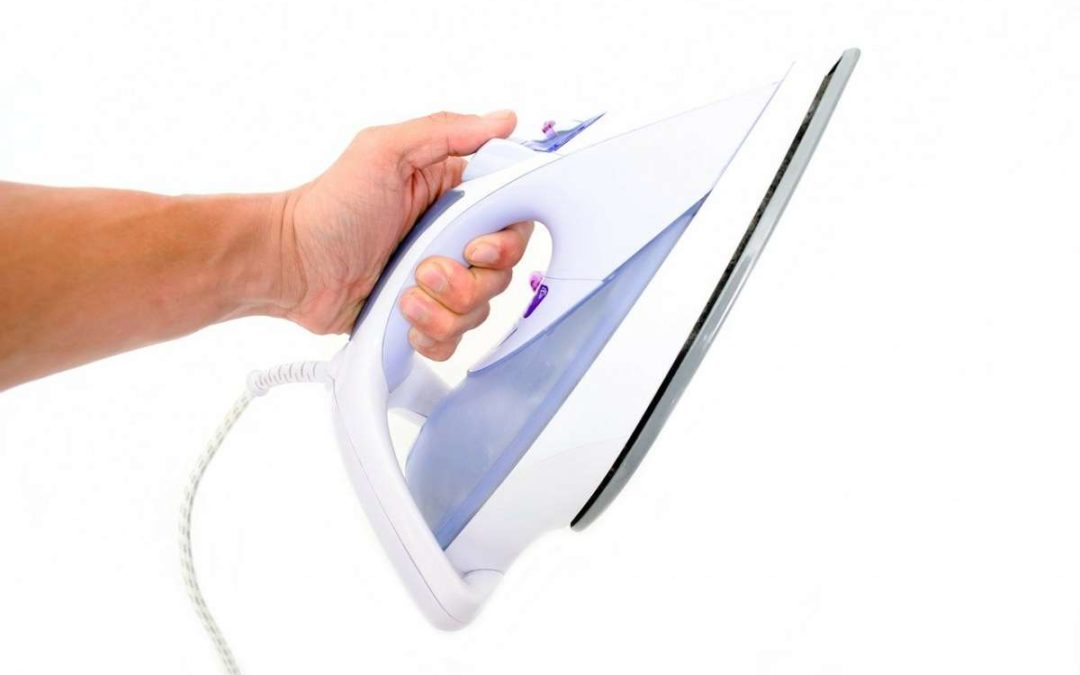
Most important things to look for when buying an iron
Which Ironing board is suitable for steam generator iron?
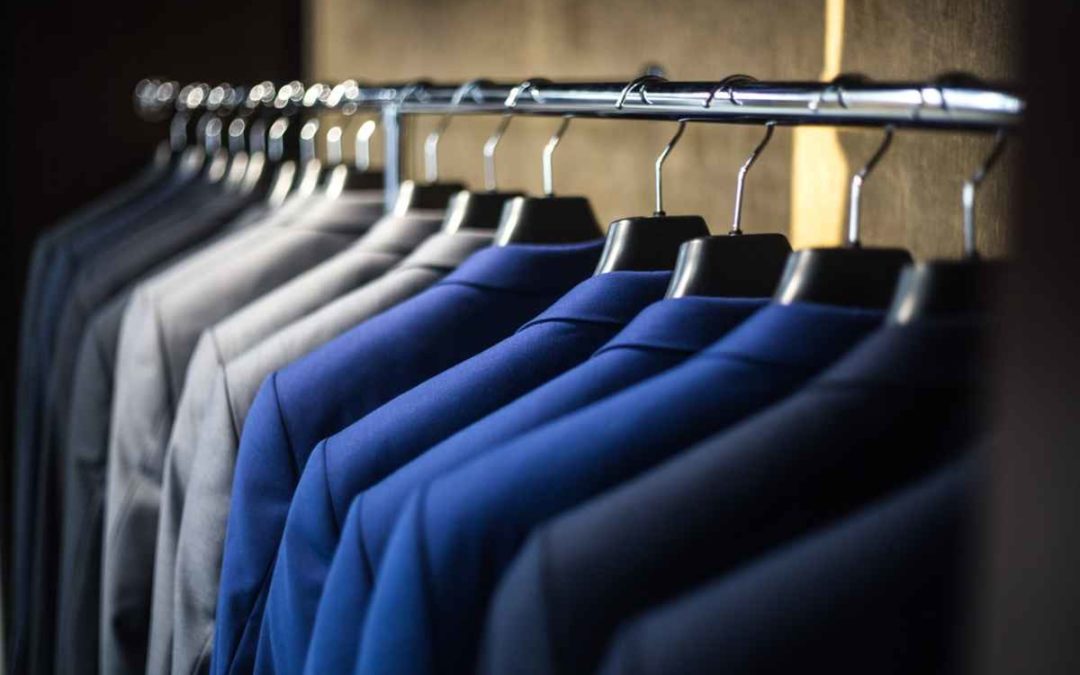
Best Steamer for Clothes | Buyers Guide
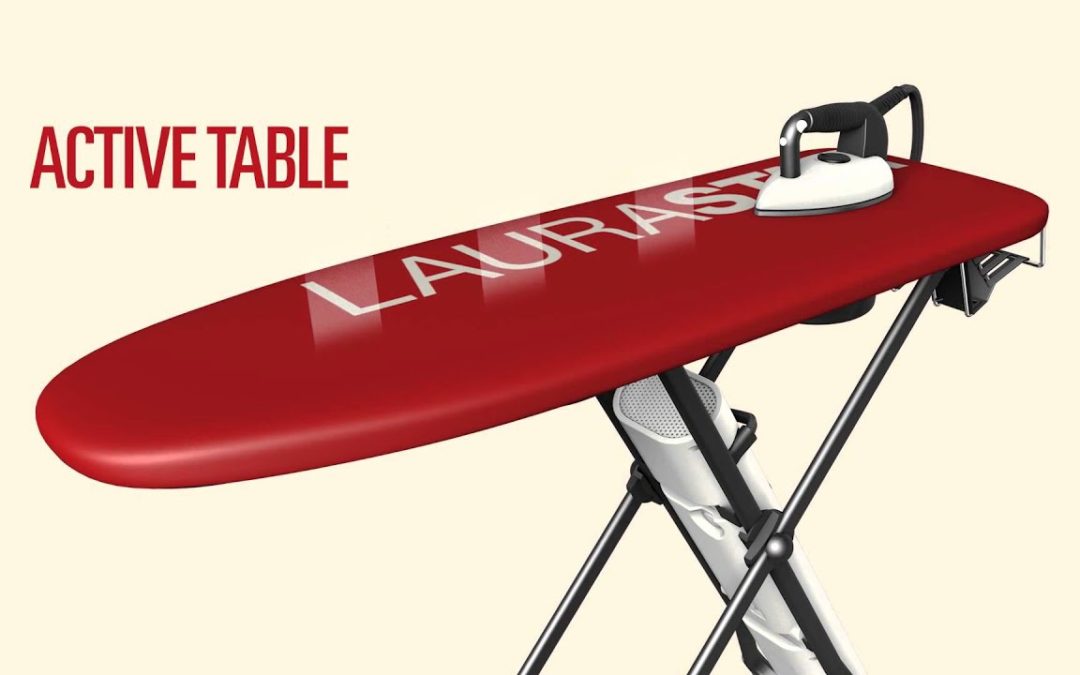
Best Ironing Boards | Recommendation and Buyers Guide
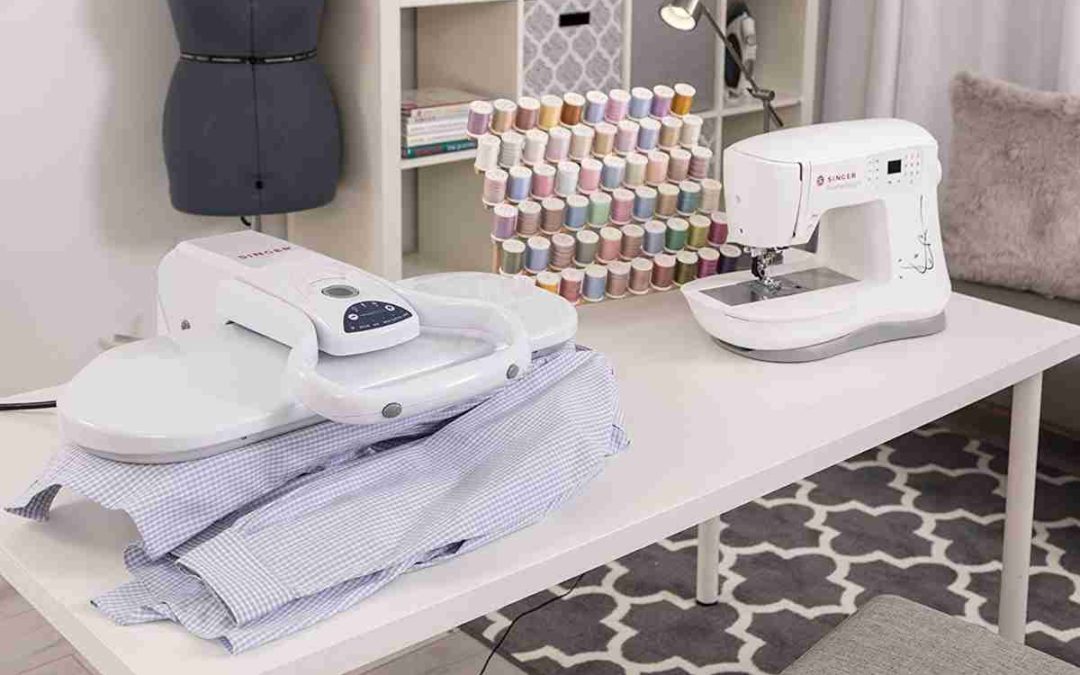
Best Steam Press | Recommendation and Buyers Guide
Soleplate
The soleplate is the heart of the iron. It not only determines the ironing result but also how easy and conveniently iron will slide over clothes.
Pay attention to the following properties:
Coating on the soleplate
It should first and foremost be robust, scratch-resistant, easy to clean and easy to clean. Also, it must be able to slide well on the textiles.
Distribution of the steam outlet holes
For the optimal distribution of the steam, the steam outlet holes should be evenly distributed over the sole. There should also be sufficient steam outlet holes at the tip of the bracket.
Narrow tip
Also, pay attention to a narrow tip that can be easily reached even in hard-to-reach places between the buttons and shirt collar.
Which Materials are good for the iron soleplate?
The soleplate can be made of different materials, which can differ in terms of their quality and their sliding properties.
Aluminum
Aluminum is mostly used in cheap models. Although it is scratch-resistant, due to its rough surface it glides less well than stainless steel or ceramic and is also more difficult to clean.
Stainless steel
Most commonly, soleplates are made of stainless steel. This material is very suitable because it is durable, scratch-resistant and glides optimally.
Ceramic
Ceramic soles are mostly used for devices in the high-priced segment. The material is not only very high quality and durable, but also scratch-resistant, ensures optimum steam distribution and has very good sliding properties.
Non-stick coatings
A non-stick coating increases the gliding ability of the soleplate and prevents dirt from sticking to it. The names of the various non-stick coatings are largely shaped by the different manufacturers and show no significant quality differences:
- Alumite
- Autoclean / palladium
- Durillium
- GLISSIUM
- PTFE (Teflon)
- SteamGlide
Power
The power of iron is given in watts (W). However, it does not refer to the temperature of the soleplate, because this is standardized. Three-stage irons have a temperature of 110 ° C in the first stage, 150 ° C in the second and 220 ° C in the third.
The power can provide information about the heating time of the soleplate and how well it keeps the temperature. Powerful models for everyday use have about 3,500 W.
Shopping tip
Especially if you frequently iron your clothes in a hurry in the morning, you should pay attention to a short heating-up time.
Steam properties
Steam irons and ironing stations can differ in their steam properties, which have a significant impact on the ironing result.
The steam output is given in g / min. For stubborn creases, most models can give an additional steam boost at 100 g / min.
The steam output of devices for everyday ironing should be at least 40 g / min.
The vapor pressure is measured in the bar; thicker fabrics, in particular, can be penetrated better with higher vapor pressure.
Caution!
Never open the heated pressure steam generator!
The heated pressure steam generator must never be opened. There is an acute risk of burns if the hot steam escapes.
Read the instructions carefully before use.
Features
Irons can have the following functions:
Temperature control
The temperature is regulated either by buttons or by a rotary wheel. Some models have special programs for different types of fabrics. These automatic programs also regulate the steam jet.
Vertical steam jet
The vertical steam jet can be used to remove slight creases from curtains or delicate fabrics using steam only, without the heat of the soleplate.
Automatic switch-off
To ensure safety and to minimize the risk of fire, ironing devices should have an automatic switch-off. The device switches itself off automatically if it is not moved after a certain time.
Self-cleaning
Some models have a self-cleaning function that saves you the annoying descaling. Lime deposits collect in a removable container. This way, the lime can be easily removed without chemical descaling agents.
Spray function
Steam irons often have a spray function. Stronger creases can be removed better and faster if the laundry is slightly dampened beforehand.
Drop lock
The drop lock prevents water drops that form at lower temperatures from coming out of the device.
Equipment
The following accessories ensure an optimal ironing result:
Ironing board
An ironing board serves as a base for ironing clothes. To ensure comfort and safety, you should first and foremost pay attention to stability and height-adjustable feet.
The ironing board should also be well padded so that the clothing does not get any pressure marks.
Ironing water
The water tanks of some models are not suitable for descaling, so they may only be filled with distilled water or with ironing water.
Ironing water is available in different scents that give your laundry a fresh smell.
Ironing cloth
An ironing cloth is a practical aid in removing strong creases from fine, sensitive fabrics that can be damaged by the effects of heat.
It is placed over the fabric during ironing and serves as heat protection.
Frequently asked questions
We have summarized what you always wanted to know about irons here.
Our FAQ collections are based on the knowledge needs of other iron buyers.
Get important answers on the subject areas in our FAQ section
Which iron is right for me?
Which product type is best suited to your needs depends primarily on the amount of ironing that comes together regularly in your household. It should also matter which textiles you mainly iron and how much space is available for the device.
The following product types are commercially available for everyday, domestic ironing:
Dry iron
Dry irons have now largely been replaced by steam irons because they offer more advantages. Dry irons work only with the heat of the sole, without steam.
Steam iron
Steam irons have an integrated or removable water tank. The water is heated in the soleplate.
This creates steam that comes out of the openings in the soleplate during ironing. The textiles are moistened and can be smoothed much faster and easier.
Steam ironing stations
A steam ironing station consists of a steam generator and an ironing device. The steam is generated in a separate water tank and fed through a hose into the ironing device.
Steam ironing stations have larger water tanks and better steam properties than steam irons. Therefore, they work faster and more efficiently and are also very suitable for larger amounts of laundry.
Ironing systems
An ironing system forms a combination of the steam generator, iron, and ironing board. The steam is also generated in a separate water tank, so ironing systems offer similar advantages to steam ironing stations.
An “active ironing board” offers additional functions such as suction and inflation, which make ironing even easier.
What do I have to consider when ironing?
Ironing is perceived by most people as a chore. However, if you value proper clothing, you cannot avoid ironing.
Ironing is quick and easy with the following tips:
Separation according to temperature
Before ironing, the laundry should be sorted according to the necessary temperature levels so that the temperature does not have to be turned up and down every time.
Pay attention to the symbols on the sewn-in label and set the temperature of the ironing device accordingly.
Pay attention to ergonomics
Adjust the ironing board so that you do not have to bend over when ironing or that you can even do the job while sitting.
In this way, you not only work more comfortably but also protect your back.
Discharging steam
Before ironing, steam should first be released a few times so that calcifications can dissolve if necessary.
Small, tricky spots first
Tricky spots like shirt collars or button strips should be ironed first.
From the largest to the smallest point
To ensure that the narrower parts remain wrinkle-free, they should be ironed from the larger textile surface to the smaller one.
Tip
You can save a lot of electricity and effort by covering the ironing board with aluminum foil and covering it with a cloth. Since aluminum foil reflects the heat, the lower side is ironed at the same time.
How can I iron curtains?
Ironing curtains is often not an easy task. But, You can easily do it with the following tips:
Ensure a clean floor
The ironing board usually does not offer enough space for large textiles such as curtains, so the ironed part must hang down from the ironing board when ironing.
Make sure that the floor is clean so that the curtain does not get dirty.
Observe care instructions
Before you start ironing, you should check the sewn-in label to determine whether the material is suitable for ironing or at what temperature level it can be ironed.
Ironing from top to bottom
Iron the curtain from top to bottom to keep it in shape. In the case of very wide curtains, one part can be ironed first, then the other.
Hang up immediately after ironing
The freshly ironed curtains should be hung up again immediately so that no new folds can occur.
Tip
Curtains that you cannot iron should be hung up again immediately after washing. Thanks to their weight, they get smooth after some time. If necessary, slight wrinkles can be removed with steam.
Which materials are not suitable for ironing?
Certain materials such as synthetic fibers, silk, viscose or wool are very sensitive due to their nature and can be damaged by exposure to heat.
To find out whether a garment is suitable for ironing, you can look at the sewn-in label. If the ironing symbol is crossed out, the fabric must not be ironed.
Slight wrinkles can be removed from the materials with the help of vertical steam, without exposure to heat. However, silk must not be ironed or moistened with steam, otherwise, stains will appear that can no longer be removed from the textile.
Where can I dispose of my old iron?
When the old iron has already had its best days, many owners ask themselves where to dispose of it. Under no circumstances should electrical devices be disposed of as normal household waste.
You can take your old iron to municipal waste and bulky waste collection point. There it is properly disposed of and recycled.
Why does the soleplate get dirty?
The most common cause of dirt on the soleplate is that textiles are ironed too hot. Synthetic fibers in particular melt at high temperatures and stick to the sole. It often happens that despite the warnings, ironing on t-shirt prints.
What should you watch out for when cleaning the soleplate?
With the following tips, the sole can easily be cleaned again:
Eraser
Light material remnants can be removed with an eraser by simply rubbing off the cooled sole.
Glass-ceramic field scraper
A glass ceramic scraper can also be used to remove stubborn dirt such as burned-in plastic. However, one should handle it carefully so as not to damage the coating of the sole.
Oven spray Burned-in
Material residues can also be removed with an oven spray. After a short exposure time, the dirt can be wiped off the sole with a cloth.
Aluminum foil
Crumpled aluminum foil is a tried-and-tested home remedy for optimally sliding a blunt sole again. Let the hot iron slide over the foil a few times. This removes light impurities.
What should you watch out for when descaling the iron?
At the latest when you find lime residues on the laundry, it is high time to descale the iron.
You can either use special products for descaling or some home remedies. You can achieve the same success with a solution of 2/3 water and 1/3 vinegar. Read the instructions carefully before descaling.
What can I do if the iron drips?
The most common cause of a dripping iron is a limescale deposit. If the iron is too heavily calcified, the water can no longer be ideally heated. The necessary 100 ° C for steam cannot be achieved, which is why drops form. This process can be prevented by regular descaling.
Another cause can be a broken seal. If your device is still under warranty, you can send it back. Otherwise, you can buy the seal as the replacement part.
Can I fill normal tap water into the iron water tank?
The question of whether you can fill your iron’s water tank with tap water or use distilled or ironed water depends on your iron model.
The specifications can differ depending on the model. The use of distilled water saves you time-consuming descaling in any case. It is a sensible solution, especially in residential areas with strongly calcareous water.
Tip
Ironing water in different scents gives your laundry a pleasant smell.










